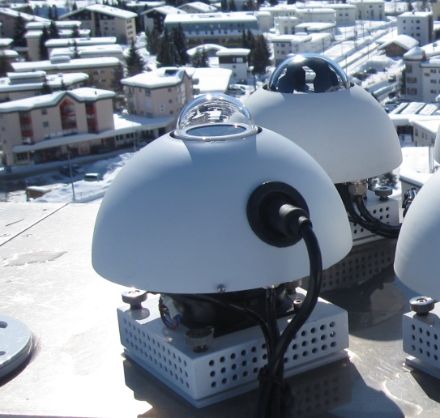Service Navigation
Search
Although ultraviolet radiation only accounts for a very small part of the sun's overall radiation intensity, it has a significant impact on human health. The wavelength of UV radiation is shorter than that of visible solar radiation, meaning it is more energetic. Excessive exposure to UV radiation can lead to skin cancer and damage the eyes, while an insufficient dose of UV radiation can result in a vitamin D deficiency.
UV measurements since 1995
MeteoSwiss measures UV radiation at the four stations of the SACRaM (Swiss Alpine Climate Radiation Monitoring) network. UV measurements have been taken in Davos since May 1995, on the Jungfraujoch since November 1996, in Locarno-Monti since May 2001 and in Payerne since November 1997. The UV radiation measurements are taken with the help of a UV biometer. These devices measure the intensity of the UV radiation using erythemal filters, which imitate the sensitivity of the skin. The term erythemal is derived from erythema, also known as sunburn.
